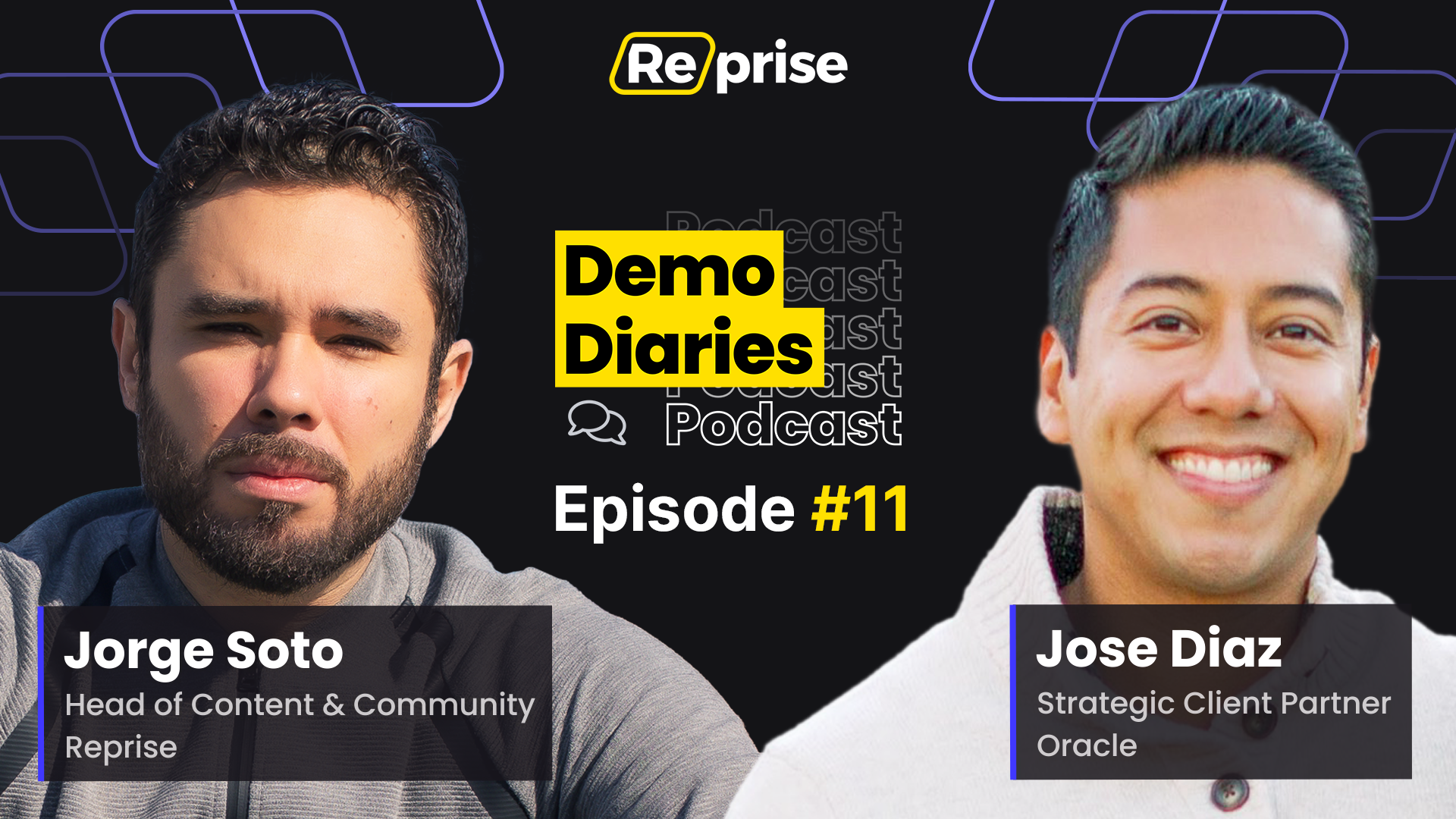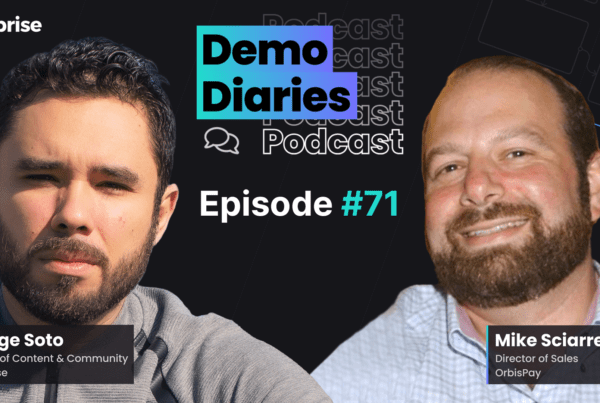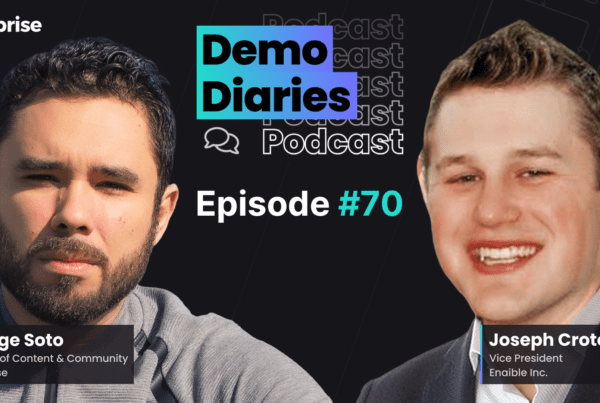Giving a great demo is about more than simply showing what your product can do – it’s also about showing potential clients what your relationship with their business will look like. And that’s why your first experience with prospects needs to win on all fronts.
Jose Diaz, Strategic Client Partner at Oracle, joined me in a recent episode of the Demo Diaries podcast to talk about how he does just that.
Meet Jose
Jose has spent more than 15 years in new business sales for SaaS solutions in a variety of different areas. In his most recent role at Moat, he was among the first salespeople hired to help the company come out of stealth mode. They were acquired by Oracle, and he’s continued to work on new business there as well as being a coach and SME to newer sales reps there.
How He Demos
If someone wants a demo, they will get a demo right away. And Jose works hard to make it a pain-free and thoughtful demo experience as well. It’s challenging at some points because Moat measures how a brand or publisher’s audience pays attention to digital ads and the analytics are proprietary, so they can’t demo those. Instead, they use a generic version of the UI with dummy data and then frame examples of how prospects can expect to work with the software and the team.
Since they want the process to be seamless, their sales reps are always ready to go with everything from the very first call. Even though they’re not able to use real data right away, the dummy data lets reps paint a picture. And the demo also shows what the relationship will look like, not just the product, so that’s why they work so hard to make it thoughtful and anticipate client needs.
Who Makes Their Demos
Individual sales reps own and create their demo experiences from start to finish, and that’s how the team has worked since the very beginning. Once reps are comfortable with the solutions and core competencies, then they start getting into understanding the different buyer personas so they can tailor accordingly while understanding the narrative for each buyer.
They train their reps to understand the smallest nuances and provide a thoughtful demo addressing pain points while envisioning the solution.
Moat is a flexible product that can be customized a lot, and reps are trained to emphasize that throughout the demo. This takes a lot of mock demos with teammates and practice, because the expectation is not to sound like they’re doing the same talk track over and over. Making the demo your own and authentic helps the demo flow better. The product features become a backdrop to a great conversation.
When Moat was just starting out, they approached early meetings with a vision pitch: here’s who we are, what we’re trying to accomplish, and what we’re doing in this space. That’s how it works at newer companies in a new space, because you need to focus on who as well as what. They presented the demo to clients to get them to buy into the vision and work together to build it.
Now Moat is much more known, so conversations are different. They walk prospects through what they might have missed about the product instead, and the demo is specific to the things they’re used to from using it in the past. They approach it now as: let’s get it going and see how it works again with new features and capabilities.
Keep it Fast and Focused
Ensure every interaction is thoughtful and your demos will succeed. Even if the prospect is not interested in buying right now, they might appreciate your thoughtful email and useful content and think positively later when they need your product. It’s not a play about quantity.
If someone requests a demo in an email or something, the team will reach out within a day or even an hour. Moat wants to avoid any bottlenecks for clients, even in initial conversations. Metrics track this to help them understand how they’re doing and speed is rewarded. To do this successfully, they have to really trust the people they hire because you want the ones who get the job done right as well as quickly. They also focus a lot on training and shadowing calls as well. It’s a small, highly collaborative team which helps keep training and branding highly focused.
Top Tip for Your Demo
Remove as much friction as possible and show them what’s under the hood.
If someone takes the time to email you and ask for a demo, that’s a mindset of wanting to know more. Give them more than just super high-level information without requiring a commitment right away.
Watch the full episode here:




